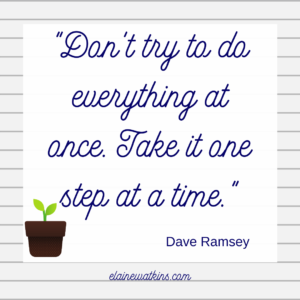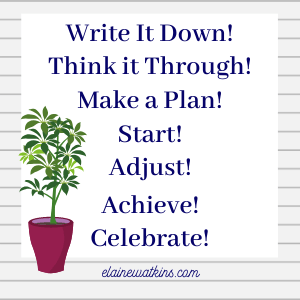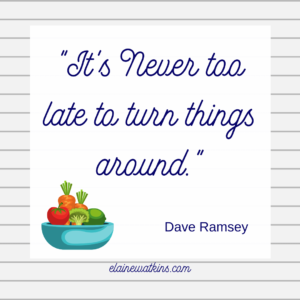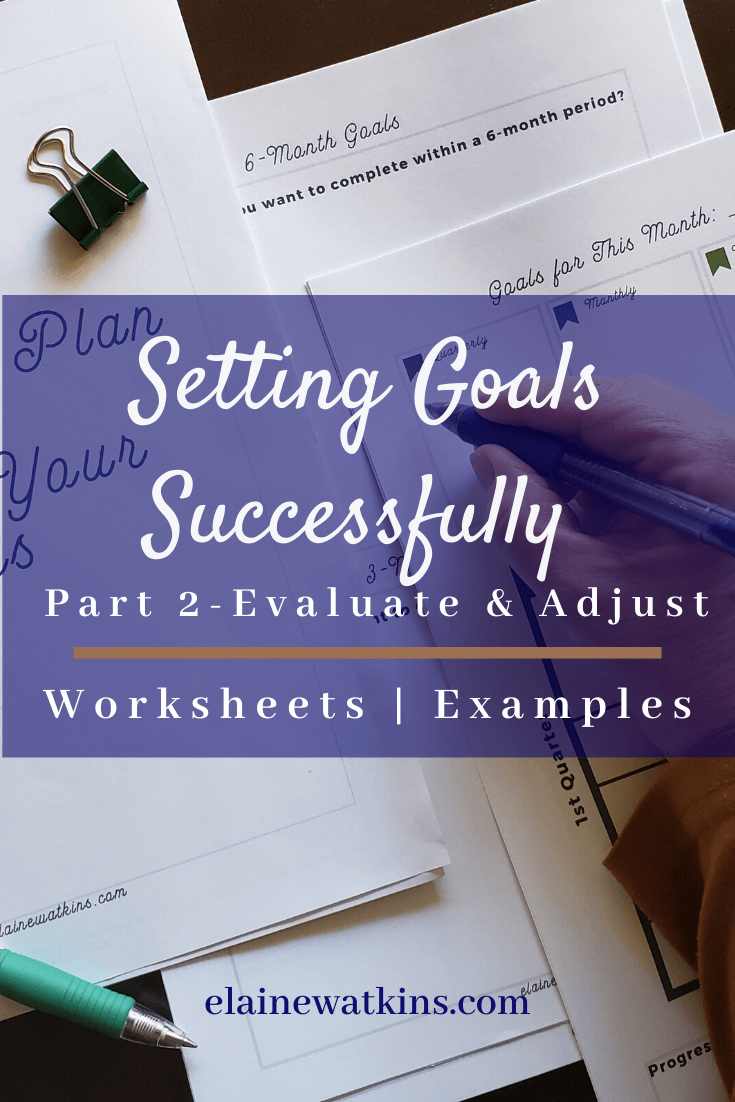3 Powerful Tips for Goal Setting Success Part 2

The whole process of setting goals can be challenging, and even important goals can be forgotten quickly when a problem comes up. So let’s talk about struggling with goals and #2 of my tips for goal setting success, tracking progress and making adjustments.
Summarizing Goal Setting Success Part 1
By now my hope is that you’ve gone back and read Part 1 of this series, but if not, here’s the link to Part 1. There we introduce:
- Resource and Activities List – to keep track of books, classes, and other opportunities that I want to consider at a later date
- Brain Dump – to get all of the ideas that pop into your head down on paper to consider and possibly plan in later as part of your goal setting strategy
- Long Term Goals – to consider and document those dream big, 10 years from now goals that you would like to reach
- Short Term Goals – to plan out (either loosely or strictly) the shorter time investment activities that will be part of you moving forward and towards a long term goal
Be sure to grab your copy of the Goal Setting Worksheets that can help you through each of the goal planning steps that I’m mentioning throughout this series. They’re not Absolutely necessary, but they’re pretty and I think you’ll find them helpful to prompt you through your goal setting.
As you work through short term goals, whether they last 1 week, 1 month, or across 1 year, it’s a good idea to keep track of your progress. And there’s nothing wrong with making adjustments along the way. Some points to consider include:
- planning to do too much at one time
- selecting short term goal strategies that can help you move forward with more than one long term goal
- strategically timing when or how long you will take to complete something
- avoid comparison
Planning to Do Too Much at One Time
Planning to do too much at one time can risk major delays or even halt any progress before you even get started if you’re not careful. To minimize this risk significantly, take time while you’re planning to consider what your existing workload and obligations will be during that time and what you can usually handle successfully under normal or slightly stretched circumstances. Ask yourself questions like:
- how many projects or changes can I handle well at the same time
- what stands out about how I usually respond to change and what motivates me
- what would stretch me slightly out of my comfort zone without overwhelm
- are there options that can move me forward across multiple goals
I know while I was nicely progressing in pursuing my nutritional endocrinology certification and beginning my health coaching business, 2 big goals for 2017 and 2018, my mom became seriously illness. I added a priority goal to become my mom’s primary caretaker and advocate, but initially continued to pursue my already set goals for my coaching, school, and life. It was all too much.
My stress level went through the roof, my Hashimoto’s started acting up again, and just about every area of my life and health suffered. I eventually started rethinking my previously set goals and repeatedly readjusted as our family struggle changed.
Because of the nature of our situation, I greatly slowed my work and school goals, in order to be available to my mom and family and support my health wherever possible.
While this is probably an extreme example, it’s a real and recent example of how important it is to realistically consider what you can do and then make adjustments, and even adjust your adjustments, if needed. 
Selecting Short Term Goals that Can Move You Forward with More Than One Long Term Goal
My big, long term goal is to live a healthy and fulfilling life. And because I know that everything I eat, do, think, and feel impacts my health and life, I have secondary goals including:
- optimal sleep, stress, and physical activity
- positive, productive thought life with no negative time-wasting negative thoughts that aren’t somehow useful
- optimal food and drink habits only
- maximized, healthy and joyful marriage
- strong and consistent faith and walk with the Lord
- healthy friendships
- continued learning and creativity
One simple goal I have for the new year is to read one non-work or school related book each month. The books I’m including will vary in focus but in topics that will help me lower my stress, support my marriage, strengthen my faith, be encouraging, and work to decrease negative self-talk.
Reading that doesn’t relate to work or school almost always relaxes me, and by picking it as a goal (and writing it down), I’ll be less likely to allow it to be squeezed off my schedule.
Since it supports several of my secondary goals, I’ll be even more inspired to make it happen, which all leads to my successfully supporting my long term goal.
I am Definitely tempted to increase the number of books I want to complete, but I know with my business, school, sick family members, and a house to run, one book a month is a smart goal for me.
As you plan how you will be working towards your goals, or making adjustments, try to incorporate activities and opportunities that will serve you in more than one long term goal. 
Timing Strategically for Goal Setting Success
If you access the Goal Setting Worksheets, you notice it’s 21 pages for possibilities.
If you find you’re struggling with one or more of your chosen goals, consider staggering your start dates, rearranging the order of your chosen activities, stretching the amount of time you designate to complete an activity, or what about dedicating specific days to focus on that activity.
Barring any externally set deadlines you might need to consider, you are in charge of your goals and plans for completing those goals.
Avoiding Comparison
It really is like the lyrics from an older Christmas show where they sing “put one foot in front of the other”.
Just start where you are and move forward.
But we’re not all on the same path. So definitely guard your thoughts by not comparing yourself to where others appear to be.
Your history and present day situation, challenges and strengths are different. You are unique, and you’ll also be unique in the goals you set and how you achieve them. 
Reviewing Your Progress
As you’re setting goals, decide to review and adjust at regular intervals. Whether weekly, monthly, or quarterly, make a plan that best fits you.
If you suspect something needs to change:
- ask yourself why
- does it fit where you are right now
- do you have what you need
- does your schedule/finances accommodate it
- are you under or overchallenged
- ask yourself how
- is this a good goal for you to seek
- should you rethink your timing (maybe next month or next year for this particular step)
- do you need to allot more time to this goal or pursue it differently
Ask yourself these or other questions that might better fit your situation, and then when you figure out your obstacles, remove them, and then start moving forward again withe your adjusted plan.
Goal Setting Success Resources
Just in case you missed it earlier, be sure to check out 3 Tips for Goal Setting Success Part 1.
And in case you are including health-oriented goals, grab one of these trackers for help:
And, of course, here’s the link to get your copy of the Goal Setting worksheets for you to print out and use to plan out and succeed in reaching your goals! 
We are each unique, and the goals we each set and how we pursue them will also be unique.
And there’s really no need to overthink here or over-stress. If something happens next Monday that blocks you from accomplishing your goal plan for that day, so be it. Just do it on Tuesday and keep moving forward.
Taking a little time to regularly evaluate your progress and making adjustments when and where needed can set you up the best plan for goal setting success.
Be sure to check out Parts 1 and 3:



